Eight months of polling
They AfD is good at spinning
Another object of rather intense media focus has been the question whether the AfD will be Germany’s third-strongest party on September 24. The aggregation model is not sure: In 10,645 of 60,000 simulated outcomes of the election, the AfD is the strongest of the minor parties. That’s 18 per cent of all runs, which roughly translates to “rather not”.
Either way, the question is quite irrelevant. The real issue here is that all minor parties enjoy very similar levels of support. If this support translates into real votes, there will be four minor parties in parliament, and coalition building is going to be a difficult, but not impossible (see below).
The Christian Democrats will be the strongest party (bloc) by a fair margin
A look at possible coalitions
While tactical voting can mess with support for the FDP (that’s the way I burnt my fingers four years ago), not a single simulation out of 60,000 suggests that the FDP will remain below the electoral threshold. All four minor parties are currently well above the electoral threshold, and their respective levels of support are indistinguishable. Take that, media people.
In terms of possible coalitions, that means (amongst other things) that right now, there is no chance for a leftist (red-red-green) government: the combined vote share for the three left parties is in the range of 39-41 per cent. This implies that there is no majority for an SPD/Green coalition, too. There is also no majority for a “traffic light” (SPD/Green/FDP) government. In sum, on current polling the probability of an SPD-led coalition (and hence the probability of a Schulz chancellorship) is nil.
But there is a not-too-shabby chance for a traditional centre-right coalition. Thanks to the strong support for the Christian Democrats, the CDU/CSU and the FDP have a (narrow) majority in 23 per cent of the simulations. A “Jamaica” (CDU/CSU+FDP+Greens) coalition would have a solid majority in all of the simulations. And of course, there is always the prospect of yet another Not-so-Grand coalition.
So it looks that I was right to sell in May and go away: If the polls reflect the reality of German politics, and if that reality remains reasonable stable for another three weeks, there are 2.23 viable coalitions that would be led by Angela Merkel, and not a single one that would be headed by Martin Schulz.
Discover more from kai arzheimer
Subscribe to get the latest posts sent to your email.
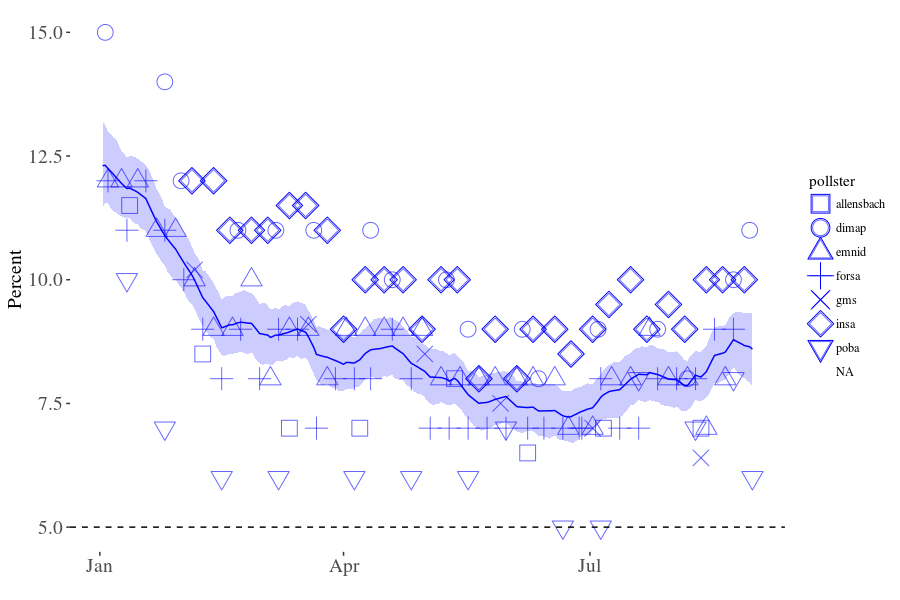
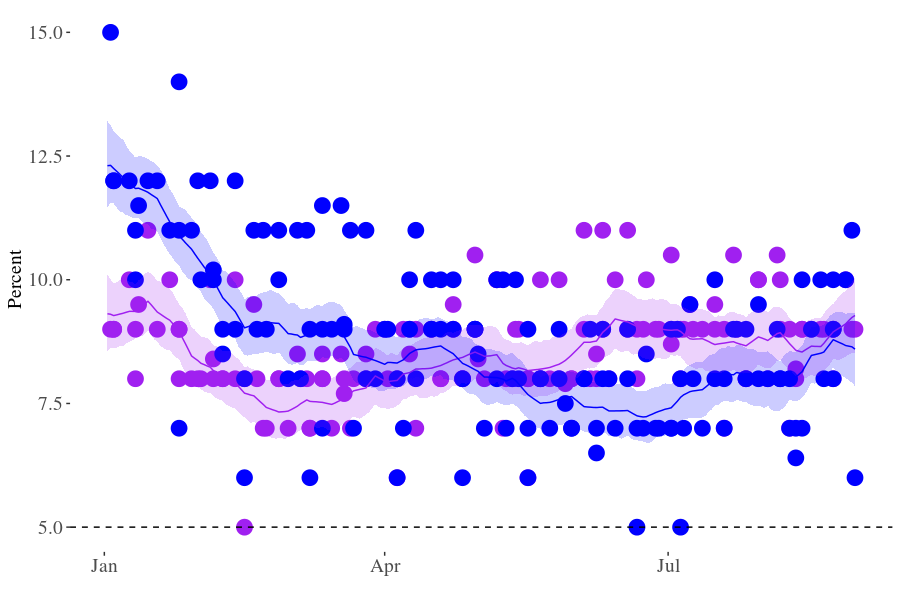
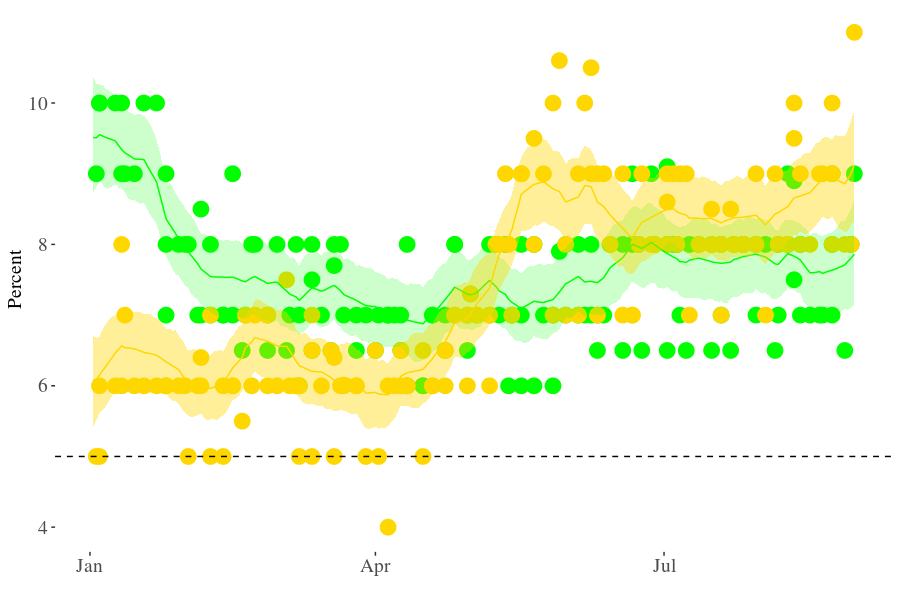
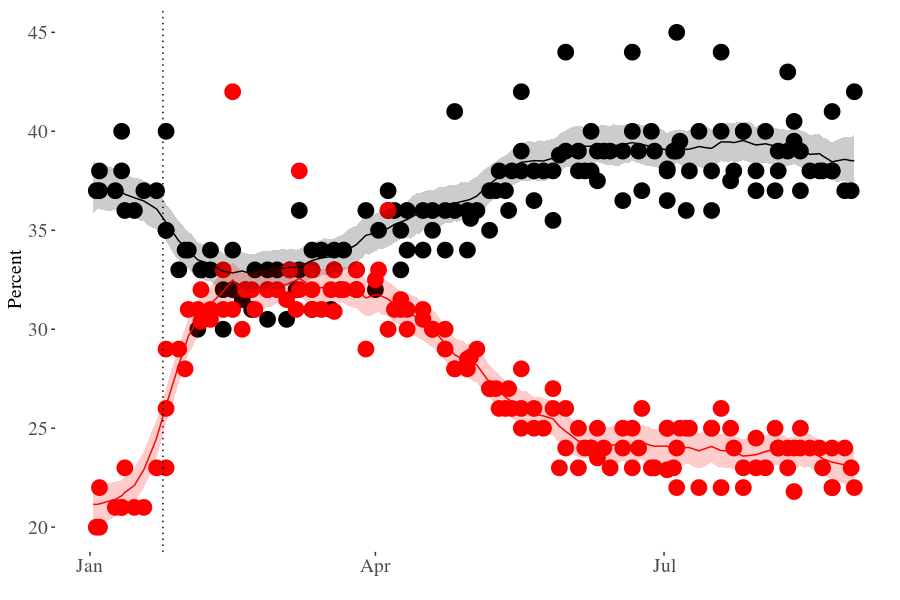
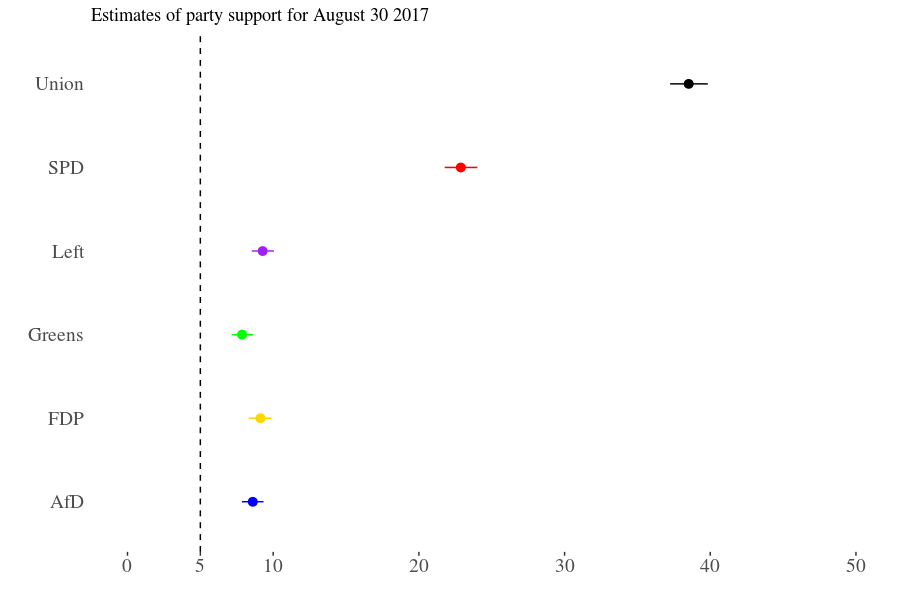

RT @kai_arzheimer: From the vault: State of the German polls: The initials of Germany’s next chancellor would seem to be A & M https://t.co…
RT @kai_arzheimer: New blog: State of the German polls: The initials of Germany’s next chancellor would seem to be A & M https://t.co/Krk6D…
RT @kai_arzheimer: New blog: State of the German polls: The initials of Germany’s next chancellor would seem to be A & M https://t.co/Krk6D…
RT @kai_arzheimer: New blog: State of the German polls: The initials of Germany’s next chancellor would seem to be A & M https://t.co/Krk6D…
RT @kai_arzheimer: New blog: State of the German polls: The initials of Germany’s next chancellor would seem to be A & M https://t.co/Krk6D…
RT @kai_arzheimer: New blog: State of the German polls: The initials of Germany’s next chancellor would seem to be A & M https://t.co/Krk6D…
RT @kai_arzheimer: New blog: State of the German polls: The initials of Germany’s next chancellor would seem to be A & M https://t.co/Krk6D…
RT @kai_arzheimer: New blog: State of the German polls: The initials of Germany’s next chancellor would seem to be A & M https://t.co/Krk6D…
RT @kai_arzheimer: New blog: State of the German polls: The initials of Germany’s next chancellor would seem to be A & M https://t.co/Krk6D…